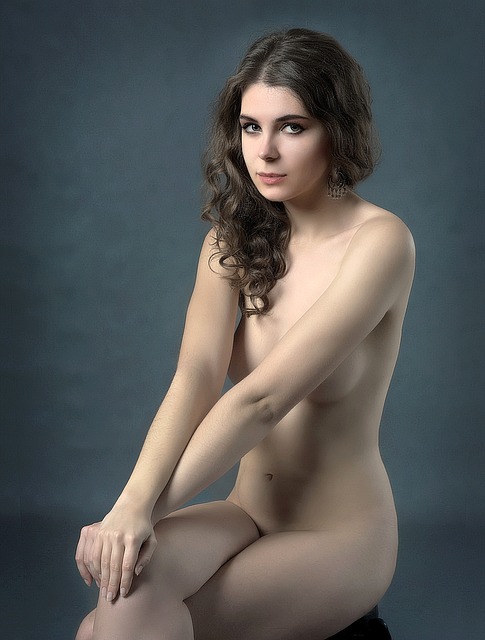Full body waxing requires proper skincare rituals before treatment to ensure smoother results. Correct technique and pressure vary by body area; professionals or study recommended. Post-waxing care includes gentle cleansing, soothing lotions, avoiding harsh products, and light exfoliation. Choosing the right wax for skin type prevents irritation and ingrown hairs. Consult an esthetician for personalized guidance.
Avoiding common mistakes is key to achieving smooth, flawless results from your full body waxing session. This guide highlights critical errors that can lead to discomfort, irritation, and uneven skin texture. By understanding these pitfalls, you can prepare your skin effectively before waxing, learn the right technique, embrace a post-waxing care routine, and select waxes suited for your skin type, ensuring a transformative and satisfying experience.
Don't Skip Pre-Wax Skin Preparation
Skipping pre-wax skin preparation is a common mistake that can lead to an unpleasant waxing experience. Before attempting any full body waxing, it’s crucial to cleanse and exfoliate your skin. This process helps remove dead skin cells, oil, and impurities, ensuring a smoother and more effective wax removal. By skipping this step, you might end up with patchy results, irritation, or even ingrown hairs—all of which can be avoided with proper skincare rituals before waxing.
Additionally, pre-wax preparation allows for better adhesion of the wax to your hair, making the depilatory process more efficient. Taking a few extra minutes to prep your skin will result in softer, smoother skin post-waxing and help prevent common waxing issues that can be both painful and time-consuming to address.
Using Incorrect Waxing Technique
Using the incorrect waxing technique is one of the most common mistakes people make when attempting full body waxing at home or visiting unprofessional salons. It’s crucial to understand that different areas of the body require distinct approaches and pressure levels for optimal results. For instance, the sensitive skin on your face demands a lighter touch than the thicker hair on your legs or back. Misjudging this can lead to discomfort, irritation, or even damage to the skin.
Proper training and experience are key to mastering the art of full body waxing. Using too much heat or applying wax in the wrong direction can cause hair to break off at different lengths, resulting in an uneven finish. Conversely, not applying enough pressure may fail to remove the hair from the root, leading to regrowth faster than desired. Therefore, seeking guidance from a seasoned professional or thoroughly studying the correct techniques before attempting full body waxing is essential to avoid these mistakes and achieve smooth, long-lasting results.
Neglecting Aftercare Routine
After a full body waxing session, many people make the mistake of overlooking the crucial aftercare routine. This can lead to skin irritation, ingrown hairs, and an overall less-than-desirable outcome. It’s essential to maintain a simple yet effective post-waxing regimen. First, gently cleanse the treated areas with a mild cleanser to remove any residual wax and ensure the skin is thoroughly washed. Then, apply a soothing lotion or oil designed for sensitive skin to calm irritation and moisturize. Avoid using harsh products, heavy creams, or perfumed lotions that could cause further discomfort.
Remember, exfoliating gently after a few days can help get rid of dead skin cells and reduce the appearance of ingrown hairs. Always use a soft loofah or cloth, and follow up with another application of moisturizing lotion to keep the skin hydrated. Neglecting these simple steps can result in rough, itchy skin, so taking the time for proper aftercare is vital to achieving smooth, supple skin post-full body waxing.
Choosing the Wrong Wax for Your Skin Type
Choosing the right wax is a crucial step in achieving smooth, long-lasting results from full body waxing. Different skin types require distinct waxes to prevent irritation and discomfort. For instance, individuals with sensitive skin should opt for soft, natural beeswax or sugar-based formulas designed to be gentle on the skin. On the other hand, those with thicker, coarser hair might benefit from a more robust wax, such as paraffin or soy wax, which can penetrate deep into the hair follicle for efficient removal. Misjudging your skin type and selecting an inappropriate wax can lead to post-waxing irritation, redness, or even skin damage.
Before opting for full body waxing, take the time to understand your skin’s needs. Consult a professional esthetician who can offer guidance tailored to your specific concerns. They can recommend suitable waxes and ensure that the application process is done correctly, minimizing the risk of common post-waxing issues like ingrown hairs or skin irritation. Remember, choosing the wrong wax could undermine the entire waxing experience, so it’s a vital step to ensure a pleasant and effective full body waxing routine.
Avoiding common mistakes is key to achieving a smooth, long-lasting result from your full body waxing experience. Remember to prepare your skin properly before treatment, learn and employ the correct waxing technique, maintain a consistent aftercare routine, and select waxes suitable for your skin type to prevent irritation and ensure optimal results. By doing so, you’ll not only minimize discomfort but also enhance the overall effectiveness of your full body waxing session.
